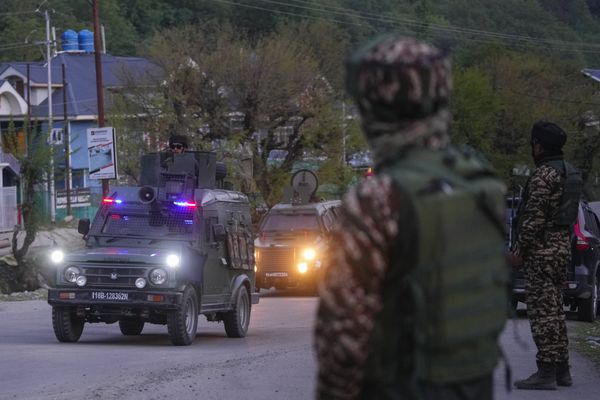
During the so-called Little Ice Age, medieval European were afflicted with bitterly cold winters and unusually mild summers. Extreme weather disasters became more common, bringing with them the scourges of disease and famine. Because we didn't entirely understand climate science back then, many blamed evil or magic for the prolonged cold snap.
"Witches" were persecuted all over Europe, but of course this did nothing to break the planet out of the Little Ice Age. Historical records show that Europe during the Little Ice Age struggled through a seemingly endless series of natural calamities. As one example, during the 16th and 17th centuries the Free Imperial City of Nuremberg — the most powerful and culturally important city-state in the Holy Roman Empire — regularly experienced intense floods, one of the harshest aspects of life in a society otherwise flourishing due to the German Renaissance.
Thanks to new research published in the journal Earth and Planetary Science Letters, ordinary people alive in the 21st Century can understand the mysteries of the Little Ice Age in ways that were impossible for the era's victims, like the accused witches and flooded Nuremberg citizens. Indeed, the geoscientists from Heidelberg University and the Karlsruhe Institute of Technology have discovered a treasure trove of climate information about both their region of Germany and the world as a whole, going back centuries and centuries.
Interestingly, they found all of this in a very unexpected place: stalagmites, or the tapering columns that grow up from the bottom of caves.
It all comes down to the fact that stalagmites are speleothems, or mineral deposits that are formed from groundwater in underground caverns like caves. For the majority of climate research, scientists could only measure short-term climate fluctuations from over hundreds of years ago using tree ring records. Even then, those tree-ring records had to be analyzed along with independent measurements from other studies, as well as cross-referenced with historical records.
Yet stalagmites offer new insights into climate fluctuations because the German researchers could examine the isotopic composition of oxygen in a southern German stalagmite that had been formed from hard water. Unusually warm years produce very wet winters while unusually cold years produce very wet summers. By analyzing the precipitation history chronicled in each microscopic layer of the stalagmite, the scientists could learn about short-term climate fluctuations from centuries ago.
Hence these new insights into the Little Ice Age. According to a statement by co-author Dr Tobias Kluge of the Karlsruhe Institute of Technology, "the data point to cold dry winters that delayed the annual ice and snow melts, leading to major short-term floods with catastrophic consequences." All of this occurred against the larger backdrop of the Little Ice Age, which was brought on by a complex combination of factors including reduced sunspot activity, increased volcanic activity, changes in the Earth's orbital geometry and disruption of the Atlantic Meridional Overturning Circulation (AMOC). Yet this research does more than illuminate Earth's history — it also helps scientists better understand the planet's future.
"In public awareness, extraordinary floods, heat waves, or drought episodes rank amongst the most tangible indications of a changing climate," the scientists write in their paper, adding that it is challenging to forecast the magnitude of these extreme events at either regional or local scales. "Development of reliable small-scale climate models requires testing against past climate records, but these are often incomplete, or cover only partial aspects in a spectrum of environmental parameters," such as the seasonal bias that exists when analyzing tree-ring records.
Yet when the tree-ring data is combined with the data from speleothems, it creates a comprehensive record of the history of Earth's water with data that can be extrapolated in ways "uniquely suited to resolve extreme short-term climate events at the regional scale," the authors report.
This is not the only recent research that connects climate change science with the science of caves. A 2019 study in the journal The Anthropocene Review described how climate change poses a threat to the rare ecosystems that exist in closed-off cave systems, many of which are valued as research sites for biologists because they are, in theory, largely separated from the influences of the outside world. It's not great news for lifeforms that live in caves, as apparently their worlds are not immune to the effects of climate change. The subterranean climate, like the one on the surface, can in many ways be impacted by anthropogenic global heating. Yet unlike surface species, subterranean life forms may struggle to cope.
"Owing to their evolution in a stable environment, subterranean species are expected to exhibit low tolerance to climatic perturbations and could theoretically cope with such changes only by shifting their distributional range or by adapting to the new environmental conditions," the authors write. "However, they should have more obstacles to overcome than surface species in such shifts, and therefore could be more prone to local extinction."
There is at least one example of cave life struggling due to climate change: Troglohyphantes, or a genus of very small spiders known as sheet weavers. Scientists writing for the journal Ecography explained how they studied the thermal conditions in western Alps caves and compared this data to the prevalence of Troglohyphantes. They found that the spiders' distribution correlated with temperature shifts from the Pleistocene epoch, as well as more recent climate shifts.
After analyzing this data, along with information on constant temperatures inside the caves, and by using ecological niche modeling, the researchers concluded that subterranean spider species have a bleak outlook. Indeed, it "pointed toward a future decline in habitat suitability for subterranean spiders and the potential extinction of the most restricted endemic species. When compared with other species that live in confined habitats such as islands and mountains, we expect cave species to be as much, if not more, vulnerable to climate change."







